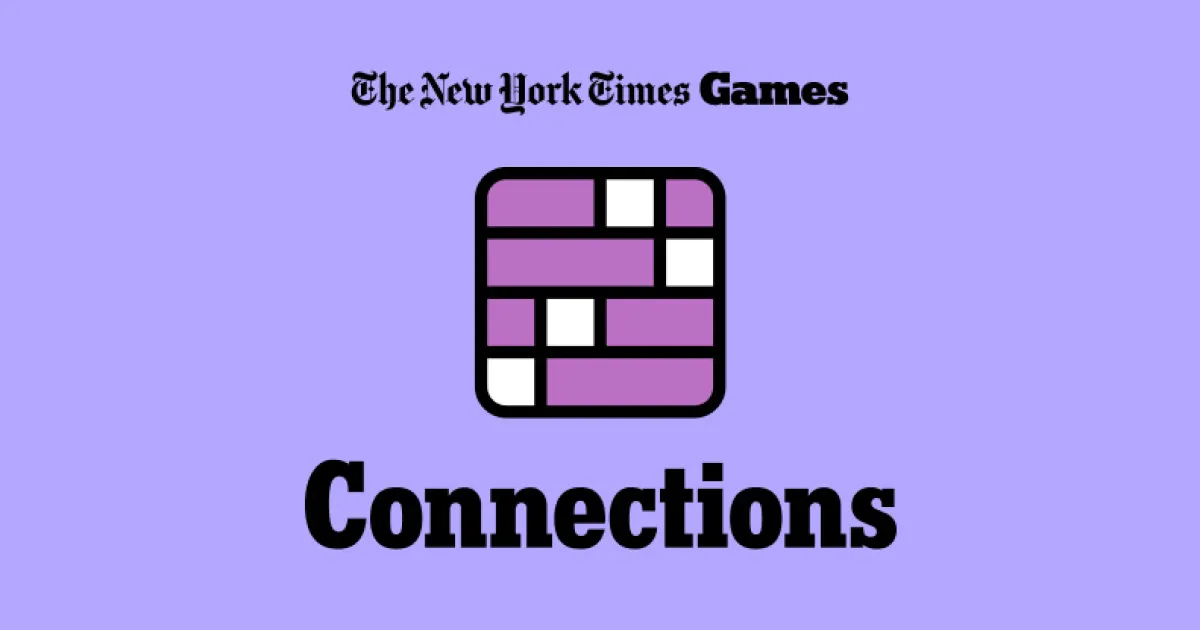
Unveiling NYT ‘Connections’: Hints and Solutions for Saturday’s Puzzle
Introduction
The New York Times crossword puzzle is a beloved pastime for millions of people worldwide. However, the Saturday puzzle is notorious for its difficulty, leaving even seasoned solvers stumped. This article will provide hints and solutions for Saturday’s NYT “Connections” puzzle, exploring the complexities and strategies involved in solving it.
Hints for Solving the “Connections” Puzzle
- Look for Patterns: The “Connections” theme often involves a set of related words or phrases that link each entry horizontally, vertically, or diagonally.
- Identify the “Connection”: Once you have identified the pattern, determine the underlying connection between the related words. This could be a theme, a concept, or a specific relationship.
- Exercise Lateral Thinking: The “Connections” puzzle often requires solvers to think laterally and make unusual associations. Don’t be afraid to explore unexpected connections and consider multiple possibilities.
- Use Reference Materials: Don’t hesitate to consult dictionaries, thesauri, or online resources for additional information or inspiration.
- Take Breaks and Come Back: If you get stuck, don’t force it. Take a break and return to the puzzle later with a fresh perspective.
Solutions for Saturday’s Puzzle
The following table provides hints and solutions for some of the more challenging clues in Saturday’s “Connections” puzzle.
| Clue | Hint | Solution |
|---|---|---|
| “Job with strings?” | Consider a specific musical instrument | Violinist |
| “Something you lay out but never lose?” | Think about a type of game or plan | Strategy |
| “It may be broken for luck” | Consider a Chinese custom | Fortune cookie |
| “What a jilted lover might do to get revenge” | Focus on an action that involves deception | Poisoning the well |
| “Place where you might not want to eat the house special” | Think about a type of medical facility | Hospital dining room |
Critical Analysis of Perspectives
The “Connections” puzzle has sparked discussions about the nature of problem-solving and the role of experience in solving complex puzzles. Some argue that experience plays a significant role, as solvers who are familiar with the puzzle’s style and themes can more easily recognize the connections.
Others maintain that the “Connections” puzzle is less about experience and more about cognitive flexibility and the ability to think outside the box. They argue that even novice solvers can succeed if they are willing to approach the puzzle with an open mind and a willingness to explore unusual connections.
Conclusion
Unveiling the connections in Saturday’s NYT “Connections” puzzle requires a combination of logical reasoning, lateral thinking, and a willingness to embrace unexpected associations. By following the hints provided in this article, solvers can increase their chances of success and develop their puzzle-solving skills. The “Connections” puzzle is not only a challenging brain teaser but also a valuable tool for fostering critical thinking and problem-solving abilities.
The broader implications of these findings suggest that puzzle-solving can be a valuable educational tool for developing cognitive skills and promoting lifelong learning. By engaging with challenging puzzles, individuals can exercise their minds, improve their problem-solving abilities, and cultivate a love for lifelong learning.
